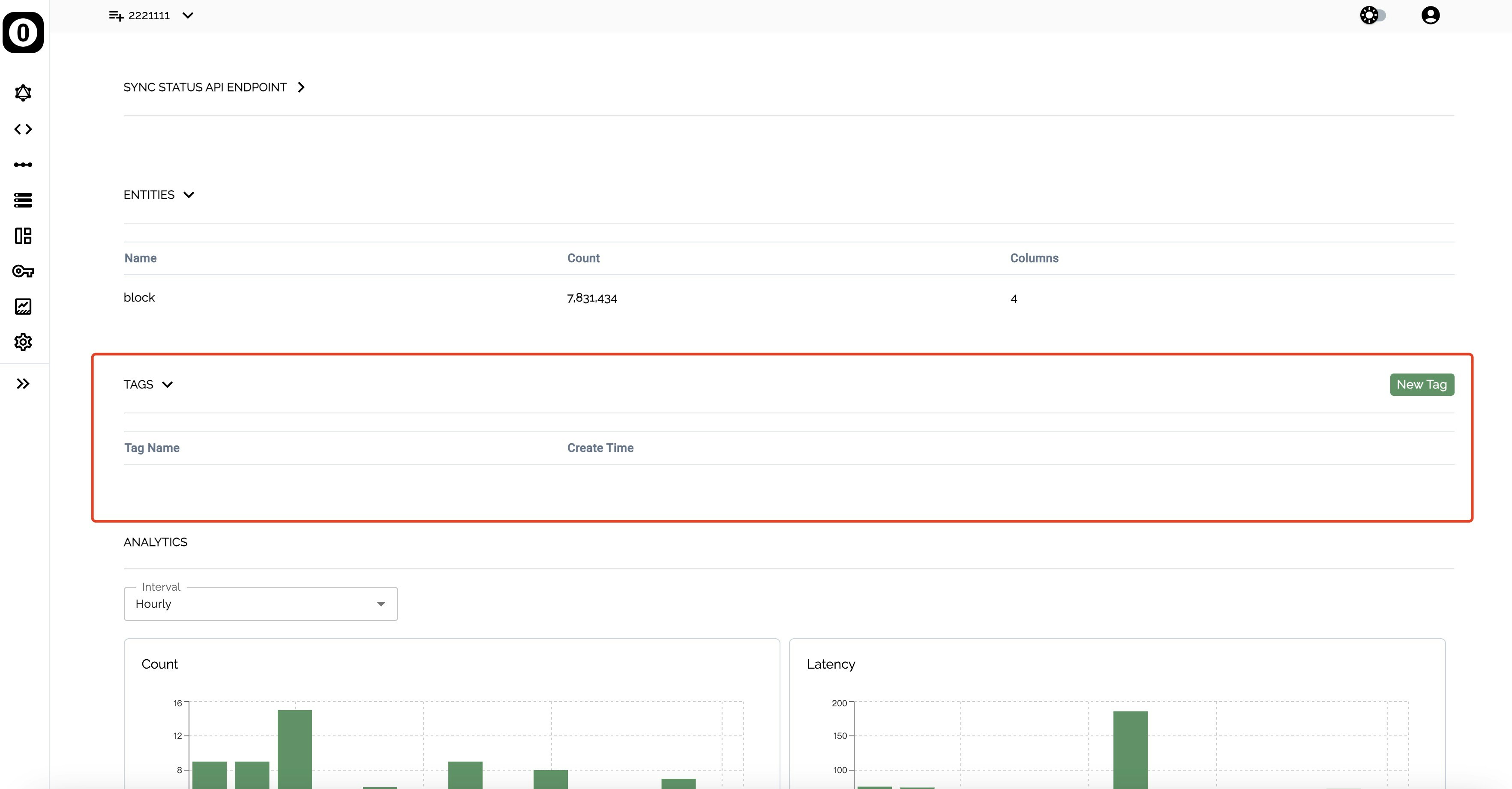
test/blocks/1.0.0. We’ll show you how to create a tag and update it to point to another subgraph version.
1
Start by creating a tag and associating it with your subgraph
Click on the deployed subgraph name to enter the details page, then find
the “TAGS” section to create a tag.

2
We’ve now created a new tag called "new". Now, our GraphQL endpoint can use the tag name "new".

3
You can now see the GraphQL link after tagging.

https://api.subgraph.ormilabs.com/api/public/{id}/subgraphs/test/blocks/{version}/gnTag GraphQL link:
https://api.subgraph.ormilabs.com/api/public/{id}/subgraphs/test/blocks/{tag}/gn
test/blocks to version 2.0.0 and want to start
querying it with your new GraphQL endpoint. It’s as simple as creating the tag
again on the new version.
Now your queries will be routed to the 2.0.0 version of the subgraph seamlessly.